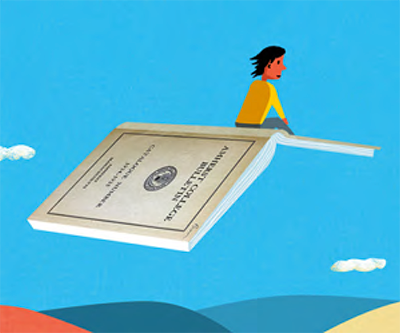
Luckily for me, I can now fill my summer reading list with course catalogs. Librarians in Frost have scanned Amherst catalogs going back 200 years, as a way to mark the College’s 2021 Bicentennial. Browse the volumes at acdc.amherst.edu to find entries such as “Natural Theology” (1821), “Play Reading, Chiefly Shakespeare” (1921) and “The European Economic Community” (1991).
Taken together, the catalogs offer a history of the College—its academic interests, priorities and aspirations over time. They also offer countless personal histories between the lines. There’s the art history course that changed the way you walk through a museum, the theater course that trained your voice not to shake, the biology course that helps you think about public health data.
There are many ways to define value when it comes to a college course. One may spark a new interest. Another may challenge an existing belief. Yet another may lead to a long career, or a long marriage. However you define value, we want to know: What’s the single most valuable course you took at Amherst?
Illustration by James Yang
Your Challenge
Make the case, in 300 words or fewer, for the most valuable course you took at Amherst. Your submission to magazine@amherst.edu should include the course name, department and instructor (or as many of those as you recall), and should tell a concise story about what you learned at the time and how those lessons are relevant to your life today. The editors will choose a winning submission and two runners-up to publish in the Fall 2021 issue. All three authors will receive a Bicentennial book.